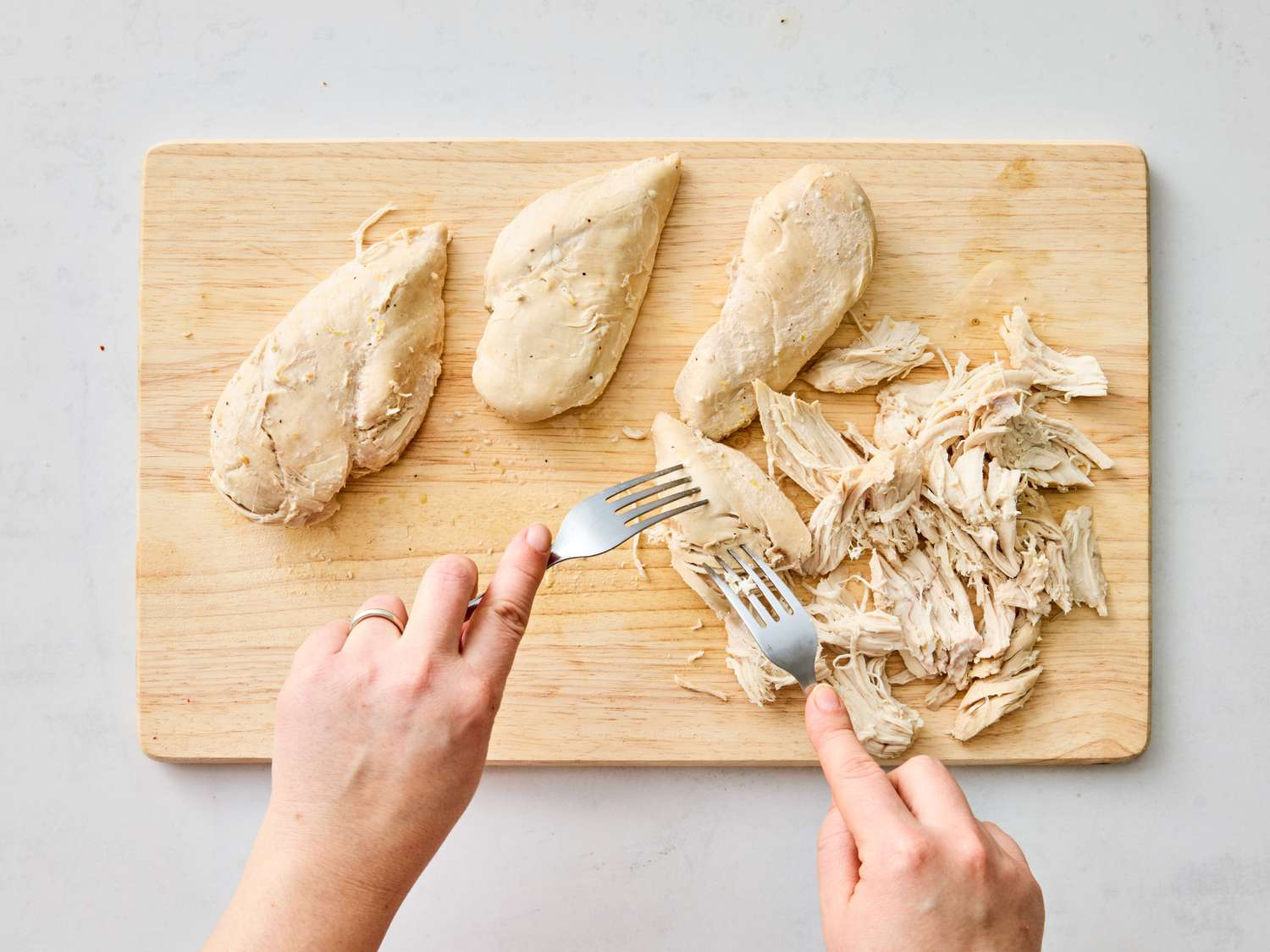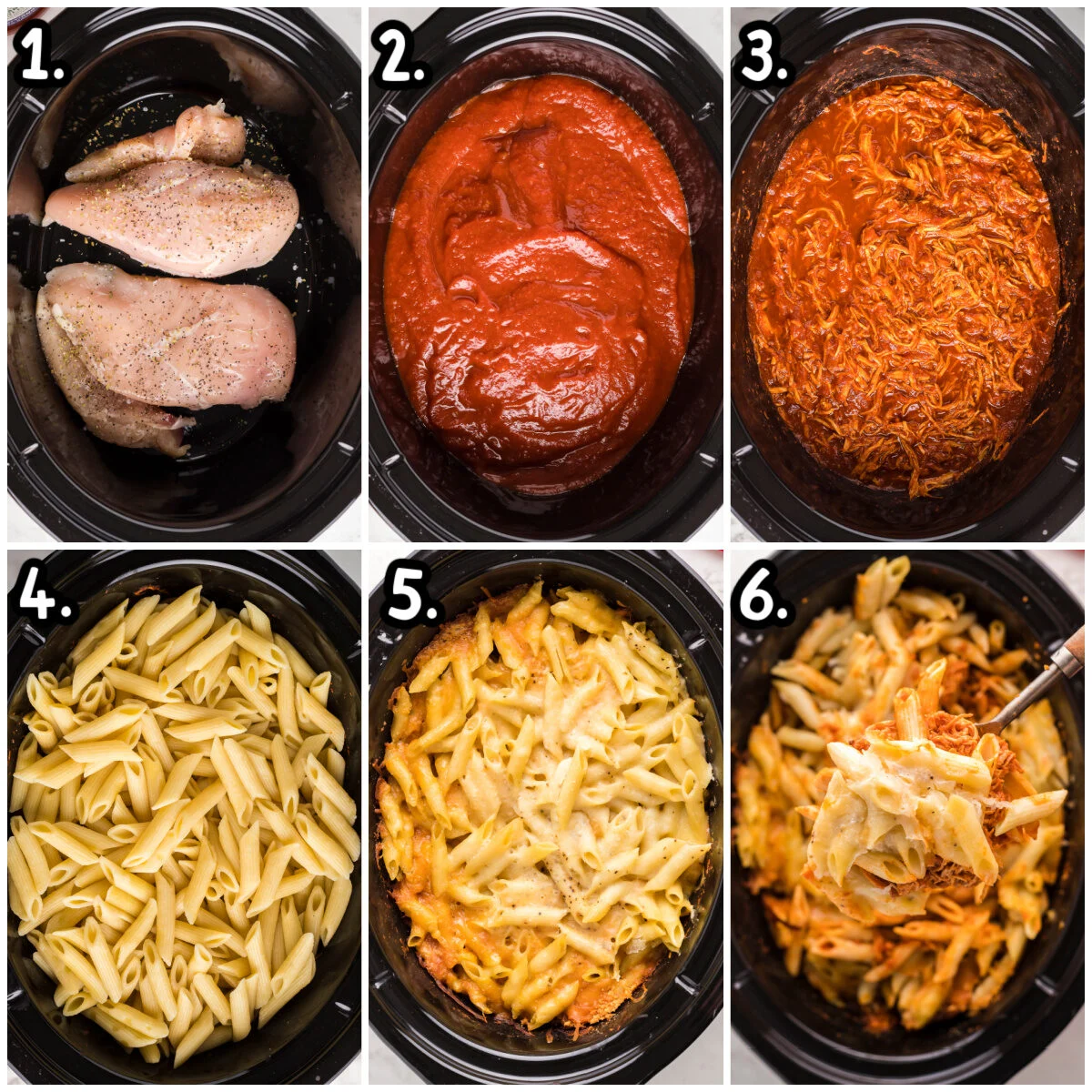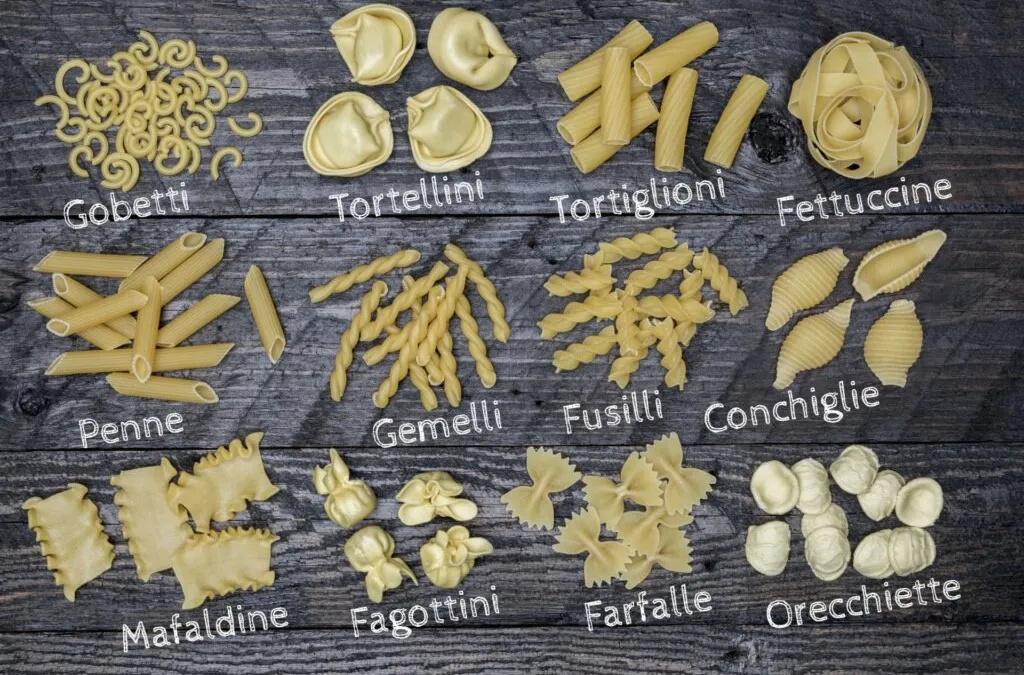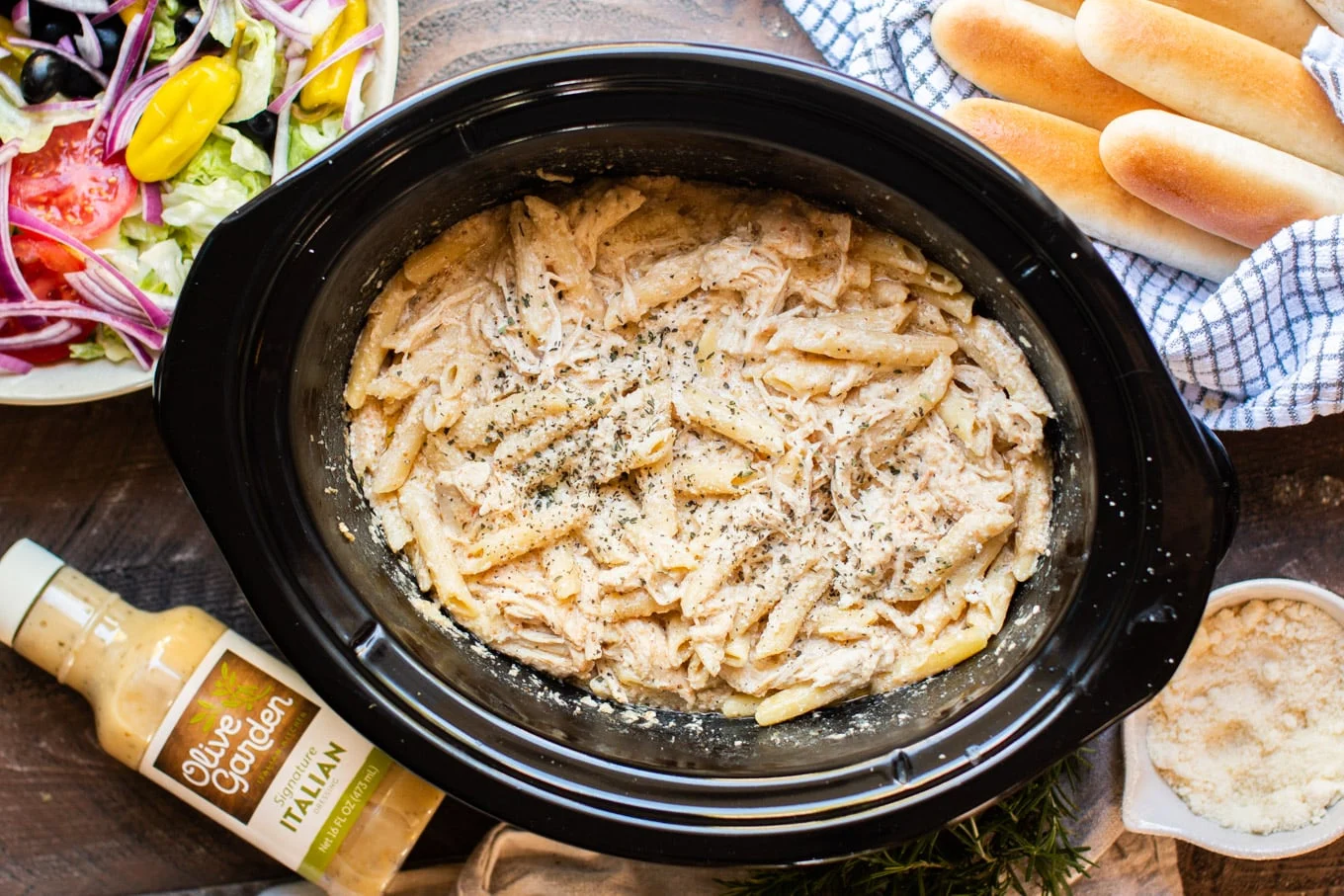Slow Cooker Chicken Pasta: Creamy, Tender, and Easy to Make

Hi — I’m Chef Marcus, and yes, you can make chicken pasta in a slow cooker. But if you’ve tried it before and ended up with dry chicken, gummy noodles, and a sauce that’s somehow both watery and clumpy — I’ve been there.
Slow cooker chicken pasta sounds like it should be the easiest thing in the world. It gets passed around online like a cheat code: just dump everything in, walk away, and come back to a full dinner. But here’s the truth — most of those recipes are built for clicks, not kitchens. And the results usually taste like it.
This dish can be a weeknight workhorse. It can be creamy, well-balanced, and satisfying in that “second bowl, no regrets” kind of way. But only if you treat it like actual cooking — with timing, layering, and a little bit of respect for how pasta and chicken behave when left alone for hours.
Foreword
Chicken pasta doesn’t ask for much — some protein, a good sauce, noodles that stay intact. And yet when you try to push it through a slow cooker, it suddenly becomes this tightrope walk between dry and overcooked, soupy and scorched, flavorless and overloaded. All because we’ve told ourselves it’s a “dump and go” dish.
It’s not. Not really.
This is a recipe that looks simple — and should stay simple — but it only works when you give each part its proper moment. The chicken can’t be cubed and tossed in cold unless you’re okay with it going stringy. The pasta has to come in late or it won’t come out right. The sauce needs to exist before the cheese hits it. None of this is complicated. But it’s also not mindless.

The good news? When it works, it works hard. You get a full meal from one pot. You get a sauce that actually clings to the noodles, chicken that’s soft but still seasoned, and pasta that doesn’t make you wish you’d just boiled it separately. Even better, it holds up for leftovers. It travels. It feeds people without feeling like filler.
So this isn’t a reinvention of chicken pasta. It’s just the version that respects how each part behaves — especially under slow heat. If that’s what you’re after, we’re going to cook something real. Let’s go.
The Chicken Question: Whole, Cut, or Shredded?
It’s tempting to dice the chicken up raw, toss it in with the sauce, and call it a day. That’s the internet’s favorite move. But small cubes overcook fast — especially in a slow cooker — and what you get isn’t tenderness, it’s textureless meat that fades into the pasta without doing anything for the dish.

If you want the chicken to actually carry some flavor, treat it with just a little more care.
Whole or Halved
Start with whole boneless, skinless thighs or breasts. Don’t cut them up. Just season, lay them into the sauce, and let the heat do what it’s supposed to do: break them down gently. They’ll stay juicy inside and absorb the flavor around them. By the time the sauce is ready and the pasta’s coming in, you can shred the chicken easily — right in the pot, with two forks or a wooden spoon.
Thighs give you more forgiveness. They’re fattier, richer, and don’t dry out if your cooker runs hot. Breasts are leaner, but they still work — just keep an eye on them. Don’t let them go past tender into rubber. And don’t assume they need to fall apart to be done.
Season It First
Don’t wait for the sauce to do all the work. Hit the chicken with salt, pepper, maybe some garlic powder or smoked paprika before it even touches the pot. The goal isn’t a spice crust — it’s just a base layer of flavor that holds through the whole cook.
Shredded at the Right Time
You want to shred the chicken after it’s fully cooked but before the pasta goes in. That way, when you stir in the noodles, the chicken distributes through the sauce without clumping. It becomes part of the dish — not something you chase around the plate.
And if you don’t want shredded? No problem. Halve the breasts before cooking, then pull them early and slice instead of shredding. Just remember that if you leave them whole until the very end, they’ll be harder to portion — and more likely to dry out while the pasta finishes.
The takeaway: the chicken shouldn’t be an afterthought. It’s the first move — and it sets the tone for everything else. Cook it right, and the rest falls into place.
The Sauce: What It Tastes Like Depends on What You Did to It
You can smell it before you even open the slow cooker — that moment when the sauce has thickened just enough to feel real, the chicken’s gone soft, and something deep and tomatoey hits you square in the chest. But getting there? That takes more than a jar of store-bought marinara and wishful thinking.

I’ve made this both ways: once with nothing but jarred sauce and garlic powder, and once with real onion, tomato paste, stock, and just enough heat to remind you someone was awake when it was built. Guess which one had people asking for the leftovers.
Here’s how to get there.
Start With Aromatics — Even If You Think the Cooker Will “Handle It”
Raw garlic thrown into a slow cooker doesn’t magically turn into flavor. It floats. Same with onion. If you want depth, you’ve got two moves:
- Sauté your onions and garlic before they go in. Doesn’t need to be fancy. Just sweat them down in olive oil until they smell like something you’d eat on bread.
- Or — if you’re skipping the stovetop — at least layer them on the bottom of the cooker so they get the most contact with heat early on.
You want them soft before the sauce ever comes to a simmer.
Tomatoes: It’s Not About Brand, It’s About Balance
If you’re using a jar of sauce, taste it. If it’s sweet? Add a splash of vinegar. If it’s flat? Tomato paste and a pinch of salt. If it’s thick and gloopy? Loosen it with a little broth. And if it’s watery? Let it simmer uncovered at the end to reduce.
Me? I usually skip the jar. I build it in the pot:
- Crushed tomatoes for body
- Tomato paste for umami
- Broth or a ladle of reserved chicken juices for fluid
- Garlic, herbs, and something sharp — a little balsamic, red wine vinegar, or lemon
You don’t need a long ingredient list. You just need to taste it and adjust.
When to Add Cream, Cheese, or Anything Milky
Do not — and I repeat, do not — add dairy at the beginning unless you want broken sauce and the smell of regret. It’s a trap. The heat splits it. The slow cook dulls it. And by the time you stir it at the end, you’ve got oil where your cream was supposed to be.
Hold the cheese. Hold the cream. Wait until the pasta’s nearly done and the heat’s low. Then — and only then — stir in the cream cheese, the grated parm, or the splash of half-and-half. It’ll melt into something silky and stay that way.
That’s how you get sauce that coats the noodles instead of sliding off. Sauce that clings to the spoon, holds the chicken, and makes it feel like a dish — not just hot stuff in a bowl.
Pasta’s Not Built for Long Cooking — So Let’s Stop Pretending It Is
There’s a reason every slow cooker chicken pasta horror story starts with, “I put the noodles in at the beginning…” and ends with “…and they disappeared.” I’ve done it. You’ve probably done it. The noodles swell, split, turn to mush, and suck the life out of everything around them.

That’s not what we’re doing here.
Dry Pasta Has One Job: Soak and Cook at the Right Time
If you’re cooking the pasta in the slow cooker (and yes, that can work), you’ve got a window. Not a time — a window. Most dry pasta needs 20–40 minutes at a gentle simmer or hot hold. That’s it. Any longer and it doesn’t just soften — it breaks down.
So watch your timing. Add pasta once:
- The chicken is done and shredded
- The sauce is flavorful and at the consistency you want
- The slow cooker is running hot, but not boiling
Then stir the pasta in and stay nearby. This isn’t the part where you leave for a meeting.
Choose the Right Shape
Not all pasta holds up the same.
Best bets:
- Penne
- Rotini
- Fusilli
- Shells (medium, not tiny)
These all have enough body and curves to cling to the sauce and resist going limp right away.
Skip it:
- Spaghetti or linguine (gets gummy and clumps)
- Egg noodles (too delicate unless you’re adding them right before serving)
- Any pasta labeled “fresh” — save that for stovetop
Stir Gently. Once.
Don’t overdo it. One good stir when the pasta goes in is enough to submerge and coat. Stirring over and over breaks the noodles and releases too much starch into the sauce — which turns your once-silky tomato cream into sludge.
If you’re cooking the pasta separately and folding it in? That’s the safest move. Especially if you’re reheating later or serving to a crowd. Just undercook the pasta slightly, drain it, and stir it into the hot sauce. Let it sit for five to ten minutes, soak, and finish cooking in the carryover heat.
That’s how you get pasta that feels like it was meant to be in this dish — not just shoved in because someone said “one pot” sounded nice on a headline.
Add-Ins That Work — And the Ones That Ruin It
Cabbage soup’s got its “don’t touch” ingredients. Chicken pasta has them, too. Not everything belongs in this pot, even if you think it will help.
Vegetables That Actually Work
Some vegetables handle the long simmer just fine. Others turn into mush, leaving the broth bland and watery. Here’s the split:
- Spinach or kale: great if you want some greens. Add them near the end so they retain their texture and don’t go soggy.
- Carrots: fine when cut into large chunks. They’ll soften over the course of a long cook but still hold their shape. Avoid tiny dice, or they’ll disappear.
- Zucchini: add at the last hour or so. It softens quickly, and if you add it too early, it dissolves into the sauce.
- Mushrooms: same deal. If you like them in your pasta, add them in the last hour. They’ll soak up flavor without turning to mush.
Meats — What Works and What’s Overkill
Chicken’s your base here, but if you want extra flavor, adding sausage or bacon can bring the richness you’re looking for.
- Sausage: Italian sausage (mild or spicy) adds a lot of flavor, but it has to be browned first. Don’t just toss it in raw — cook it, crumble it, and stir it in near the end.
- Bacon: Same deal. Crisp it up, then crumble it over the top before serving, or toss it in at the end. Don’t add raw bacon to the slow cooker — it won’t crisp up, and it’ll release too much grease into the sauce.
Dairy — Don’t Overdo It
I love cheese as much as anyone, but here’s the thing: dairy in slow cookers is a delicate business. It can curdle, it can separate, or it can just overtake the entire dish.
- Cream cheese: great for richness, but add it at the end to avoid curdling. Stir it in, let it melt into the sauce, and you’ll get that creamy texture without it turning into a blob.
- Cheese: Use Parmesan or mozzarella near the end. Grated or shredded works better than chunks — which can clump. Don’t dump it in at the beginning, or you’ll get greasy, separated cheese sauce.
- Heavy cream: Only add it in the final 30 minutes of cooking. You don’t want the cream to break or separate. Stir it in gently and let it simmer for a few minutes before serving.
Herbs and Seasonings — Building Layers
This isn’t a “toss the dried basil in and call it a day” situation.
- Fresh basil or parsley: Add these right at the end, just before serving. Let the heat in the slow cooker open them up without turning them black.
- Red pepper flakes: if you want heat, a pinch in the last hour works well. Spice doesn’t need hours to develop in this dish, and you don’t want it to overwhelm the other flavors.
- Garlic: Add fresh garlic early, but if you’re using garlic powder, add it toward the end. Fresh garlic can mellow as it cooks, but powdered garlic will get bitter the longer it sits.
The Big Mistake: Too Many “Flavor-Bombs” Too Soon
It’s easy to get carried away when you’re cooking something as flexible as this. But adding things like too many spices or extra ingredients all at once can ruin the simplicity you’re after.
Remember: the slow cooker is doing a lot of the work for you, so don’t overcomplicate it. Build your flavors with care and add new elements slowly. The goal is a dish that tastes like the sum of its parts, not like a mix of everything you had in the fridge.
Cook Time and Temperature — Letting It Go vs. Knowing When to Stop
I’ve had the slow cooker running, expecting everything to come together just right, only to open it up and find that the pasta’s mush, the chicken’s barely there, and the sauce is just… flat. That’s the problem with slow cooking: it’s easy to let the clock control things, but you’ve got to trust your feel for when the dish is actually done.

Low vs. High — When to Use What
We already know that pasta doesn’t need to simmer all day. And chicken? It can go from juicy to dry if left too long on high heat. So, when do you go low, and when do you go high?
- Low and slow (6–8 hours) is the move if you’re cooking chicken that’s tender but still whole — like whole breasts or thighs. This method lets the flavors develop slowly, without rushing the cooking process. It’s also the best option for the chicken to break down gently, giving you that shredded texture.
- High (3–4 hours) works if you’re pressed for time and using boneless, skinless cuts that can cook faster. But be careful: on high, the chicken can overcook and dry out faster, and the pasta can turn into mush if added too early. If you’re going high, add pasta late — 20–30 minutes before serving — to ensure it doesn’t disintegrate.
Checking Doneness — It’s Not Just About Time
You know when chicken is done when it shreds easily with a fork. But don’t stop there. Taste the sauce. Is it thickened to your liking? Are the flavors balanced? Is it rich enough to coat the pasta? If it needs a little more body, you can:
- Let it cook uncovered for a little while to reduce the sauce
- Stir in a spoonful of cream cheese, grated parmesan, or a splash of cream for richness
- Taste and adjust salt or acid if it needs balance
Pasta’s Role in the Timing
Pasta’s the wild card. It doesn’t follow your slow-cooker clock the way meat does. So here’s the trick: add it in the last 20–30 minutes of cooking. Any longer than that, and you’re begging for mush. Stir it in gently to coat, but don’t over-mix it. Let it soak in that sauce, but don’t press your luck by stirring too much.
If you’re cooking on high, add pasta at the 3-hour mark. On low, give it a bit longer — 4 to 5 hours — but again, don’t let it swim in the liquid too long. It’ll soften and absorb, so check it before it breaks down completely.
What Happens When You Overcook
Even if everything is “done,” overcooking still makes a difference. You might notice that the pasta gets too soft, the chicken too dry, or the sauce turns too thick or too thin. The key here is managing the heat and keeping a close eye on texture. Don’t just trust the clock. The cooker keeps cooking after you’ve turned it off, so always leave a little room for carryover heat.
The Texture Check
When you think it’s done, pull a piece of chicken and give it a little test. You don’t need to shred it yet, but if it falls apart with a gentle push, you’re in the zone. Taste the sauce and adjust the seasoning. Add a little more acid, salt, or pepper to lift it. If the sauce is thin, let it reduce for a bit with the lid cracked. If it’s too thick, add a bit of broth or water until it’s right.
The pasta should be firm but tender, not mushy. It should still have enough bite to hold its shape but be just soft enough to feel like part of the soup.
Once you’ve got it right, the slow cooker is still your friend. Let everything rest for 10–15 minutes before serving. The flavors settle. The pasta absorbs a little more sauce. You’re ready.
Serving, Topping, and the Bowl ItselfAt this point, you’ve got tender chicken, creamy sauce, and pasta that’s perfectly cooked. But what makes it feel like something worth coming back to isn’t just what’s in the pot — it’s how you finish the whole thing. The details you add right before you serve it that give the meal a little more texture, a little more dimension, and a lot more heart.Toppings That Actually WorkLet’s start with the obvious: cheese. If you didn’t stir it in earlier (which I don’t recommend), now’s the time. Grated Parmesan, mozzarella, or even a little sharp cheddar on top adds creaminess without making it greasy. A handful of fresh basil or parsley right before serving doesn’t just brighten the color, it cuts through the richness. It’s the pop of freshness that makes the whole thing feel balanced.But don’t go crazy. I’ve seen pasta dishes get lost under a mountain of cheese, herbs, and oil. A little goes a long way.And if you want to elevate the dish a bit — drizzle some olive oil or even a touch of balsamic glaze over the top. Not too much. Just enough to give the dish that silky finish.The Sides That Actually WorkYou don’t need much to complete this dish. It’s already hearty with the chicken and pasta, so a side that complements without overshadowing is ideal.
Garlic bread: because, well, you need something to mop up all that good sauce. Make it crispy but not too thick. You’re dipping, not chewing through a loaf.Simple green salad: something crisp and acidic — arugula with a lemon vinaigrette, a fresh spinach salad with a tangy mustard dressing. Something that adds freshness and crunch to balance the creaminess of the pasta.Roasted vegetables: don’t make them too complex. Just carrots, zucchini, or even broccoli, lightly seasoned and roasted to add some texture to the plate. They should be the side dish, not the star.
The Finishing TouchesRight before serving, make sure you’ve given everything one last taste. Is the sauce too thick? Thin it with a little pasta water or broth. If the flavors are flat, add a squeeze of lemon juice or vinegar for brightness. If it’s too tangy, balance it with a pinch of sugar or a splash of cream.
Reheating — Don’t Just Microwave It
If you just pop it in the microwave and press “reheat,” you’re asking for dry pasta and chunky sauce. Instead, go for gentle heat.
- Stovetop: The best option. Transfer the pasta and sauce to a pot and reheat on low. Add a splash of broth or cream to loosen the sauce as it heats. Stir occasionally. The pasta will absorb some of that liquid and rehydrate, staying just soft enough without turning to mush.
- Microwave: If you’re in a rush, don’t just throw it in for 5 minutes. Instead, put it in a microwave-safe bowl, cover it with a damp paper towel, and heat it in short bursts (1-2 minutes). Stir after each burst to make sure it’s evenly reheated and don’t overcook the pasta. A splash of water or broth helps the pasta retain moisture.
The Best Way to Revive the Sauce
Sometimes, when pasta sits overnight, the sauce thickens up more than you want. No problem. You just need to add a little liquid to loosen it up — pasta water, chicken broth, or a splash of cream will get you back to that perfect consistency. Stir it in gently and let it simmer for a minute to bring everything back together.
Freezing for Later
I’m not going to lie: freezing pasta with sauce isn’t always the best idea if you care about texture. When you freeze the whole meal, the pasta becomes soft and mushy upon reheating. If you want to store it for longer than a few days, freeze the sauce separately and cook fresh pasta when you reheat.
To freeze, let the sauce cool completely, then transfer it into an airtight container or freezer bag. It’ll keep for up to a month. When you’re ready to eat, just reheat the sauce on the stovetop and cook fresh pasta.
Repurposing Leftovers
If you’ve got leftovers but don’t want to just have the same thing again, here’s how to breathe new life into the dish:
- Turn it into a casserole: Combine the leftover pasta and sauce in a baking dish, top with extra cheese, and bake at 350°F for 20-30 minutes, until bubbly and golden. It’s an easy way to bring some crispness to the dish and add layers of flavor.
- Make a pasta bake: Toss it with breadcrumbs and bake it until crispy. The creamy sauce and leftover chicken mix together in a whole new way.
- Turn it into a soup: Add some broth or stock, extra vegetables, or greens, and stretch it into a hearty soup. Add a few fresh herbs or a squeeze of lemon juice to brighten it up.
Leftovers aren’t just about eating the same meal twice. With a little creativity, they can feel like a totally different dish the second time around.
FAQ — Slow Cooker Chicken Pasta
You’ve got the chicken in, the sauce simmering, the pasta on the way. But then — wait. Is it done? Is the sauce supposed to look like that? Is the pasta supposed to be that soft? Here’s where I answer the “Is this normal?” questions that pop up when things don’t look quite right or the recipe’s not going exactly as planned. No stress — we’ve got this.
Can I put uncooked pasta in the slow cooker?
Yes, but only in the last 30 minutes of cooking. Any longer, and you’ll have mushy pasta. Add it in once the chicken is cooked through and the sauce has thickened up. Stir gently and keep an eye on it. You don’t want to overdo it. You can also cook the pasta separately and just stir it into the sauce at the end if you’re worried about texture.
Why is my pasta so soggy?
It’s usually a case of overcooking or adding it too early. Remember, pasta needs a short time in the slow cooker — 20-30 minutes at the most. If it’s in for too long, it breaks down into a soggy mess. Next time, stir it in toward the end or cook it separately and add it when the sauce is ready.
Why does my chicken look dry even though I cooked it on low?
It’s probably overcooked. Even on low, chicken breasts can dry out if left in the slow cooker too long. Try checking it after 6 hours if you’re cooking whole breasts. If you prefer to shred the chicken, use thighs instead. They’re more forgiving and will stay juicy through longer cooking times.
Can I use frozen chicken?
Yes, but it changes the texture. Frozen chicken adds moisture at first, but it can also make the meat more rubbery once it’s cooked. I recommend defrosting it if you have time. If you do cook it frozen, check the internal temperature to make sure it reaches 165°F (74°C), and note that it may take longer to cook through.
When do I add the cheese or cream?
Add cheese and cream last. Don’t throw them in at the start or you’ll risk separating the sauce. Stir in cream cheese, heavy cream, or shredded cheese in the final 30 minutes, when the sauce has thickened, to keep it creamy without curdling.
How do I prevent the sauce from being too thin?
If the sauce turns out thin, you can let it cook uncovered for a little while to reduce. Another trick is to use a slurry — a mixture of cornstarch and water added in the final 15-20 minutes. But don’t add it too early or the sauce will break. If you’re short on time, use a little tomato paste to thicken and enrich the sauce.
What can I do if my sauce is too thick?
Thin it out by adding a bit of broth or water. Stir it in gently, a splash at a time, until the consistency feels right. If you’re not sure, taste it after each addition — you don’t want to make it too watery.
Can I make this dish ahead of time?
Yes! You can prep everything the night before and refrigerate it. Just add the pasta 20-30 minutes before serving, and then stir in your cheese or cream once everything is cooked through. The slow cooker can be set to “warm” for a little while after cooking, so the sauce and chicken stay ready to go without drying out.
Slow cooker chicken pasta is one of those meals that seems like it should be fail-proof, but it does need a little attention. The key is knowing when to add the pasta, how to balance the sauce, and when to stop cooking the chicken. With a little patience, this dish goes from “just good enough” to something you’ll want to make again.
Closing: Slow Cooker Chicken Pasta Isn’t About Perfection — It’s About Intentional Cooking
There’s nothing fancy about slow cooker chicken pasta — but that doesn’t mean it can’t be great. It doesn’t have to be a struggle, and it doesn’t have to be a rush. All it needs is a little care at the right moments: the right chicken, the right timing for the pasta, the sauce that’s balanced but not overcomplicated.
You don’t have to reinvent it. You just need to respect what’s going into the pot, treat the flavors like they matter, and let the slow cooker do its thing. The result? A meal that feels effortless — but still tastes like it was cooked with intention.
If you do it right, this dish will fill the house with warmth, feed a crowd, and leave enough for tomorrow. It’s not just a quick fix. It’s a real meal. And sometimes that’s all you need.